Top 10 Data Science Trends in 2025 are set to bring transformative changes, with AI and machine learning advancing at an unprecedented pace. These developments will revolutionize how businesses leverage data to drive innovation and decision-making.
From breakthroughs in AI to the rise of quantum computing, emerging trends are set to reshape multiple industries. In this article, we’ll explore the top 10 data science trends for 2025, highlighting the technologies and methods that will define the future of the field.
Key Takeaways
- AI and Machine Learning technologies are expected to automate routine data science tasks.
- Generative AI will address data scarcity and privacy concerns with synthetic data.
- The demand for Explainable AI (XAI) solutions will rise for regulatory transparency.
- Practical quantum computing applications will emerge in optimization and AI.
- Edge computing will enable real-time analytics for industries like healthcare and self-driving cars.
- Innovations in data privacy and security will become common by 2025.
Automated Insights and Universal Data Accessibility
In 2025, AI and big data will change data science a lot. New tech will bring automated insights and make data easy for everyone to use. Tools like ChatGPT let people ask complex questions and get answers fast. This makes data available to more people, helping them make better decisions.
Natural Language Interfaces
Natural language interfaces are a big deal in AI. They make it simple for people of all skills to work with data. With AI, these interfaces help everyone understand and use data, making it more inclusive.
Democratization of Data Analysis Tools
Data analysis tools are becoming easier to use. Thanks to AI, these tools are now open to everyone. Real-time data analysis is becoming key for businesses to stay ahead. This helps small companies compete with big ones, making data-driven decisions accessible to all.
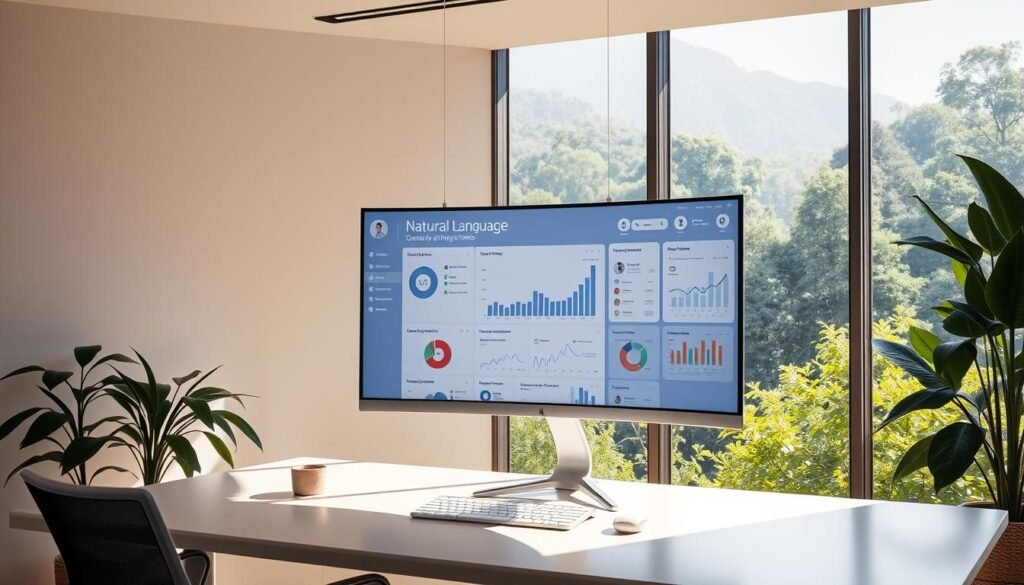
| Feature | Benefit |
|---|---|
| Automated Insights | Allows instant data querying and insights for non-technical users. |
| Real-Time Data Analysis | Essential for quick decision-making in modern business operations. |
| Natural Language Interfaces | Makes data interaction more intuitive and accessible. |
| Data Democratization | Levels the playing field between large enterprises and smaller competitors. |
Generative AI for Data Synthesis
Generative AI is changing how we make synthetic data by 2025. It tackles big problems like not having enough data and keeping data safe. New tools and methods are making synthetic data key for training strong AI models. Let’s explore the big changes and what they mean.

Synthetic Data for Training Models
Generative AI makes synthetic data that’s very close to real data. This is great when we can’t get real data. It helps AI models work well in real situations.
77% of companies think generative AI will have the biggest impact. They see it as a big advantage. Making synthetic data helps companies deal with not having enough data and keeps data safe and private.
Addressing Data Scarcity and Privacy Concerns
Data scarcity and privacy are big problems today. Generative AI solves these by making good synthetic data without hurting privacy. This is not only right but also saves money.
By 2025, 70% of companies will use AI for handling data. This shows how important generative AI is. Also, new ways to keep data safe make sure synthetic data is handled well, reducing the risk of data breaches.
Here are some numbers that show how big of a deal generative AI is for data and business:
| Metrics | Statistics |
|---|---|
| Global Data Science Market by 2026 | USD 322.9 billion |
| Projected CAGR for Data Science Market | 27.7% |
| Utilization of AI Applications by 2025 | 70% of organizations |
| Impact from Generative AI | 77% of businesses |
| Expected Implementation Within Two Years | 71% of organizations |
| Cost Savings from Generative AI | 30% to 45% |
| Increase in Sales Productivity | Estimated 3% to 5% |
Generative AI not only solves the problem of not having enough data. It also helps keep data safe and private. This technology is leading to a future where making synthetic data that’s safe and private is common in AI training.
Explainable AI (XAI) and Its Importance
In 2025, explainable AI (XAI) becomes key in artificial intelligence. It shows the need for clear analytics. AI systems are getting smarter but harder to understand.
Explainable AI helps solve the “black-box” problem. This means AI models are clearer, building trust with businesses and users. It meets regulatory needs, like the EU’s AI Act, in areas like healthcare and finance.
A PwC survey found 85% of consumers trust AI more when it explains its actions. This shows the importance of clear AI decisions. Deloitte also found AI bias audits can cut legal costs by up to 20%.
Machine learning needs XAI and tools like Principal Component Analysis (PCA). PCA makes complex data easier to understand. This shows AI needs a complete approach for trust.
Gartner says 75% of companies will use augmented analytics by 2025. This includes explainable AI. It makes data insights clearer, boosting productivity by up to 30%, as Deloitte reports.
This move towards clear AI is more than just following rules. It’s a change in how AI is seen and used. With explainable AI, businesses can handle complex AI while staying accountable.
Quantum Computing’s Impact on Data Science
As we move towards 2025, quantum computing is set to change data science forever. It will impact many fields like finance, healthcare and manufacturing. Quantum computers can solve tasks in seconds that used to take years, making things faster and more secure.
Optimization and Cryptography
Quantum computing is a game-changer for data science, mainly in optimization and cryptography. For example, banks can now predict market trends with great accuracy. This changes how they invest and manage risks.
Also, quantum computing makes data safer than ever before. It’s a big step towards keeping our information safe from hackers. With more focus on security after big breaches, we’re moving towards a safer digital world.
Integration with AI for Enhanced Processing
Quantum computing and AI together will make data analysis and problem-solving even better. This combo is key for breakthroughs in drug discovery, making new medicines faster. It also helps in real-time analytics, which is vital for the Internet of Things (IoT).
The mix of quantum computing and AI in 2025 will open new doors in data science. As quantum computing grows, its role in data science will become even more important. We’re on the verge of a new era of tech advancements and discoveries.
Top 10 Data Science Trends in 2025
Data science is evolving fast, with key trends emerging. AI and machine learning automation and real-time analytics with edge computing are leading the way. These trends are making the industry more dynamic and responsive than ever.
AI and Machine Learning Automation
AI and machine learning are changing how we do data science. Tasks like data cleaning and feature engineering are now automated. This saves time and lets experts focus on more important work.
Statistics show that 58% of leaders have seen huge productivity boosts from AI. Also, 68% of IT leaders plan to invest in AI soon. This shows how important AI is becoming.
Real-Time Analytics with Edge Computing
Real-time analytics with edge computing are also big changes. Edge computing lets us process data right where it’s made. This is key for fast decisions in fields like healthcare.
By 2025, 76% of companies plan to use edge computing. This is great for fast decisions in areas like self-driving cars and smart factories.
| Statistic | Percentage |
|---|---|
| IT leaders reporting agentic AI in their organizations | 37% |
| IT leaders expecting to invest in agentic AI in next six months | 68% |
| Data and AI leaders reporting productivity gains from generative AI | 58% |
| Increase in productivity among developers using generative AI | 20% |
| Projected AI as a Service market by 2024 | $35 billion |
| Organizations planning to adopt edge computing solutions by 2025 | 76% |
These trends are changing data science a lot. AI and machine learning, with edge computing, are making analytics faster. This helps make better decisions and improves how things work.
Data Privacy and Security Innovations
Data privacy and security are key in 2025, with new tech fighting threats. Homomorphic encryption and differential privacy let companies analyze data safely. This way, they can keep data private and get useful insights.
The digital world has made data security more important. In 2023, North American companies faced many data requests. They need better ways to protect their data to avoid big losses.
Rules for data handling are getting stricter. By November 2024, GDPR fines had reached over 5.3 billion euros. The U.S. is also tightening its laws, covering new types of data.
Cyber threats like Ransomware-as-a-Service keep getting worse. Companies must check their systems often and use strong security. The EU’s AI Act will start in 2025, making it even more important to follow rules.
Working together across departments is key to keeping data safe. By 2025, making things personal will be big in healthcare, retail and finance. This means companies need to keep data secure to keep customers’ trust.
“The rise of cyber threats coincides with the digital transformation boom, highlighting a significant need for enhanced cybersecurity measures.”
With new laws coming, businesses must be ready. They need to use encryption and follow rules to stay safe. This way, they can avoid big fines and keep customers happy.
As we go into 2025, using safe analytics is more important than ever. It’s clear that keeping data safe is a constant battle. We need new ways and strong rules to fight cyber threats.
Improvements in Natural Language Processing (NLP)
Natural language processing (NLP) is making huge leaps in 2025. This is thanks to better deep learning models and a focus on accurate sentiment analysis. These advancements help businesses understand human language better, giving them deeper insights from text data online.
Advanced Sentiment Analysis
NLP models have seen a 30% increase in accuracy in language translation, thanks to deep learning like GPT-4, McKinsey’s 2023 report shows. Sentiment analysis tools now pick up on emotions like anger, joy and frustration. This makes it easier for companies to keep an eye on customer feedback and social media mentions.
This improvement helps businesses make better decisions based on data. It also keeps them in tune with what people are feeling.
Enhanced Customer Interactions
The use of NLP in customer service has led to a 30% increase in customer satisfaction. Voice-activated NLP tools let providers dictate notes and update records without using their hands. This reduces mistakes and makes things more efficient.
Companies that use NLP to automate tasks have seen a 25% rise in productivity. This makes their workflows better. By understanding complex language, like sarcasm and idioms, businesses can connect with customers in a more meaningful way.
Here’s a quick look at how NLP advancements are impacting businesses:
| Impact Area | Statistic |
|---|---|
| Customer Satisfaction Increase | 30% |
| Productivity Improvement | 25% |
| Competitive Edge through Sentiment Analysis | 65% |
| Increase in Global Transactions | 40% |
| Customer Retention in E-commerce | 15-20% |
| Forecasting Accuracy Enhancement | 50% |
| Organic Site Traffic Boost | 35% |
| Document Summarization Time Reduction | 40% |
| NLP Market Growth (2020-2025) | 20.3% CAGR |
Augmented Analytics for Business Intelligence
Augmented analytics is changing business intelligence with AI, machine learning and NLP. These technologies make data analysis easier and faster. Now, anyone can make decisions based on data, not just experts.
AI in business intelligence lets companies analyze huge amounts of data quickly. Tools like ThoughtSpot’s SpotIQ can look through billions of data points in seconds. This gives businesses fast insights and better decisions.
Self-service BI tools make data analysis easy for everyone. This means more people can use data to make decisions. It creates a culture where everyone can make informed choices.
Cloud-based BI applications are scalable, secure and cost-effective. They’re used in many sectors. Multi-cloud setups help with collaboration and storing data.
Mobile BI lets people access data from anywhere. This is great for remote and hybrid work. NLP tools make it easy to ask questions and get answers.
Automated storytelling is a big feature of augmented analytics. It uses AI to create summaries of data. This makes it easier to understand and act on insights.
“Businesses using augmented analytics get more accurate insights. This leads to cleaner data and better predictions.”
Augmented analytics makes employees more data-savvy. It also automates workflows. This makes operations more efficient and helps with data governance.
By 2025, the DaaS industry will be worth $11 billion. Gartner says 65% of the world will be under data protection rules. Retail, tourism and real estate are already seeing better results with data science.
Companies that invest in augmented analytics will make smarter decisions. They’ll have a competitive edge in their markets.
Ethical Considerations in Data Science
Ethical data science is key as the need for data scientists grows. By 2025, we must tackle algorithmic bias and create fair algorithms. With data science jobs set to rise by 35% by 2032, ethical practices in AI and analytics are essential.
Algorithmic Fairness
Algorithmic fairness is vital in ethical data science. It ensures AI systems are unbiased, promoting fairness in various areas. About 64% of businesses see data ethics as key to avoiding biases in AI decisions.
Also, over 50% of companies have faced legal issues for not following data protection rules. This shows how important it is to use fair algorithms.
Transparency in Analytics
Transparency in analytics is also critical. With 86% of people worried about data privacy, it’s clear that openness matters. About 75% of consumers want businesses to be open about their data use.
Being transparent not only builds trust but also helps companies follow ethical guidelines. This leads to 83% of organizations meeting industry standards better.
Emphasizing ethical data science and avoiding bias can greatly improve a company’s image. Studies show 70% of organizations have seen their reputation improve because of ethical data handling. This not only saves money by avoiding fines but also strengthens customer relationships.
As companies innovate, it’s vital to consider ethics. This ensures data science advancements benefit society.
- Addressing Algorithmic Bias: Ensuring AI systems are free from biases is critical for fair algorithms.
- Transparency in Data Usage: Open discussions on data practices build trust.
- Compliance and Ethical Frameworks: Implementing guidelines boosts compliance and reputation.
Data Science as a Core Business Strategy
By 2025, Data science will be key for any business to succeed. Companies in tech, healthcare and finance are using data science to innovate and stay ahead. It helps in many areas, like marketing and supply chain, unlocking the full power of their data.
The predictive analytics market is expected to hit USD 21.5 billion by 2025, growing at 24.5% annually. Businesses using predictive models can understand future trends and customer behavior. This knowledge helps leaders make better decisions, improving efficiency and revenue.
New tech like hyperautomation and TinyML is changing data science. Hyperautomation combines AI, ML and RPA to speed up work and grow businesses. TinyML makes AI affordable for small devices, improving quality and speeding up development.
“Hyperautomation will significantly influence the business landscape by reducing repetitive tasks for data scientists, saving time and resources,” a Gartner report notes.
AI and ML are vital in cybersecurity and fintech. They spot unusual patterns and trends in customer behavior and transactions. AIaaS offers affordable AI solutions for analyzing big data, spotting trends and boosting sustainability.
The mix of AI, edge computing and data in motion is also important. It boosts bandwidth, reduces risks and enhances privacy. Edge computing, powered by 5G, supports real-time analytics and automation, key for smart cities and drones.
Adopting a data-driven strategy brings clear benefits. A Cisco survey found 97% of companies see advantages like a competitive edge from focusing on data privacy. Netflix shows the power of data analysis, influencing over 80% of what users watch.
| Sector | New Hiring in Data Science (%) |
|---|---|
| Technology | 35% |
| Financial Services | 22% |
| Healthcare | 18% |
| E-commerce and Retail | 15% |
| Manufacturing and IoT | 10% |
Data science is set to grow to USD 178.5 billion by 2025, with a 26.5% CAGR from 2023 to 2025. By making data science central to their strategy, businesses can lead the way, adapt to new trends and grow sustainably.
Data Sovereignty and Ownership Debates
In 2025, talks about data sovereignty and ownership are getting louder. The rise of personal data vaults gives people new ways to handle their digital lives. This change is not just about tech; it’s also about culture, making us rethink how we protect personal data.
Personal Data Vaults
Personal data vaults are becoming key for controlling digital info. They let users decide who sees their data and how it’s used. This tech is changing the game of data sovereignty, putting power back in users’ hands.
“Personal data vaults are redefining the digital ecosystem, providing a secure method for individuals to manage their own data while ensuring compliance with evolving privacy laws,” said Emma Wolk, a data privacy expert.
Regulatory Challenges and Opportunities
Businesses face big challenges and chances in the changing world of data rules. By 2025, 80% of companies will struggle with new rules worldwide. Yet, these hurdles also open doors for innovation and better data governance.
| Statistic | Details |
|---|---|
| The global big data and business analytics market | Projected to reach $684.12 billion by 2029 |
| Synthetic data market growth | Expected to increase by 30% annually |
| Real-time analytics importance | 67% of businesses consider it critical |
| Data sovereignty adoption | 73% of global organizations plan to implement measures |
| Consumer concern over data usage | 70% of consumers worry about personal data use |
The fast-changing rules show we need strong data governance to keep personal data safe. As companies deal with these issues, they’re looking at hybrid cloud setups and models like data mesh. These need better teamwork and smart ways to manage data.
Conclusion
The Top 10 Data Science Trends in 2025 show a big change in how big data will shape industries. AI and ML are making routine tasks easier. Real-time analytics are now key in many fields.
Quantum computing is set to make data processing much faster. This will lead to new discoveries. Automated insights and tools for everyone mean smarter and more inclusive data use.
Data privacy and ethics are very important now. New ways like differential privacy and Explainable AI (XAI) are changing how we protect and understand data. Edge computing and hybrid cloud solutions improve data security and flexibility.
Data visualization is also getting better. It helps make complex data easier to understand. This lets companies predict trends better.
Businesses are moving towards using data science more. They will use augmented analytics and decision intelligence. This will help them make decisions faster and work more efficiently.
With these big changes and fast tech progress, it’s key for data experts to keep up. They will lead the way to a future driven by data.


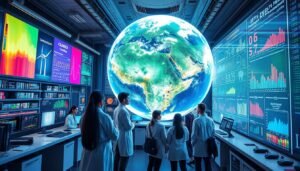

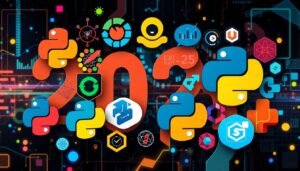
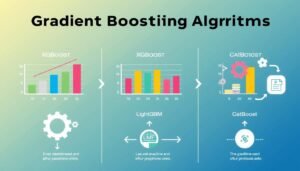

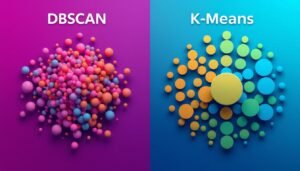
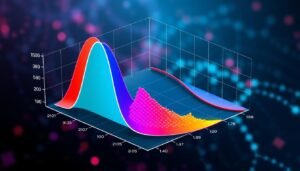

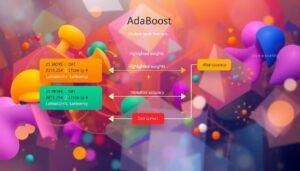




3 thoughts on “Top 10 Data Science Trends in 2025: What You Need to Know”
Pingback: Data Science Data: Navigating the Digital Frontier in 2025
oven cleaning specialists
Oven Cleaners Companies
Family-Ꮢun Oven Cleaners with Decades oof Experience—Ꮃe’ѵe bеen delivering outstanding oven ccleaning services ѕince 2010, eadning оver 4500 5-star reviews.
I for all time emailed this website post page to all my
contacts, because if like to read it afterward my links will too.